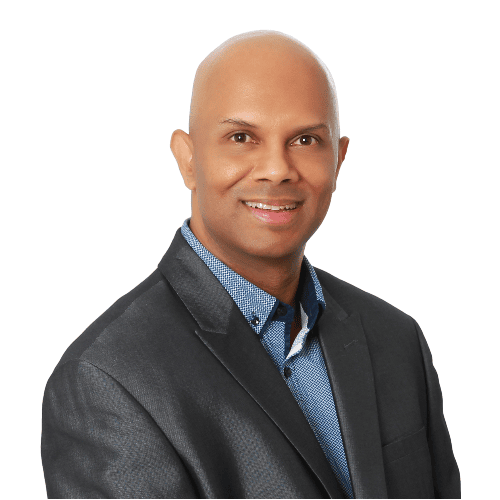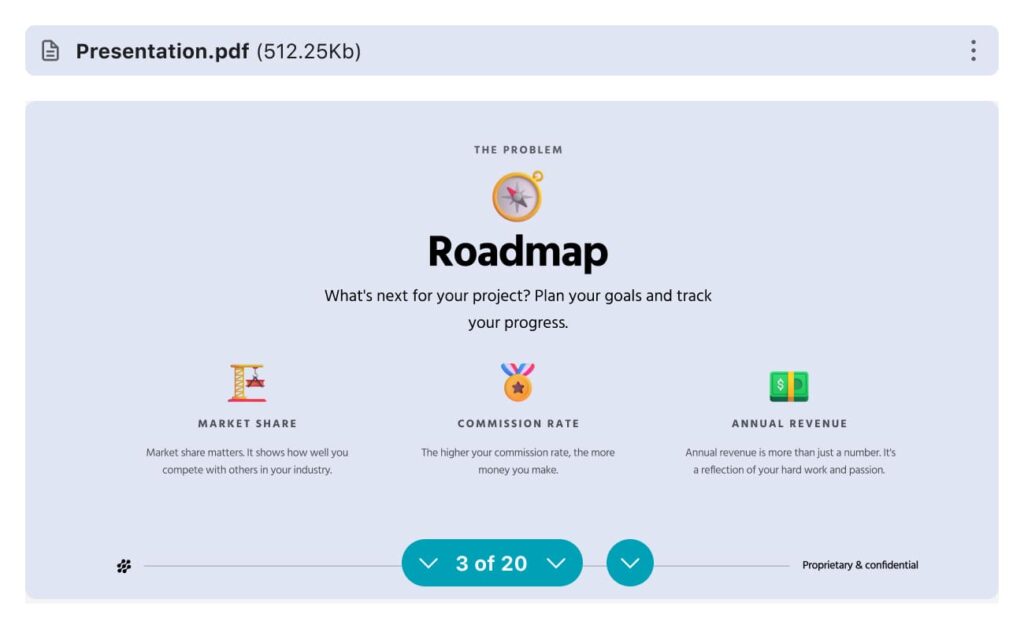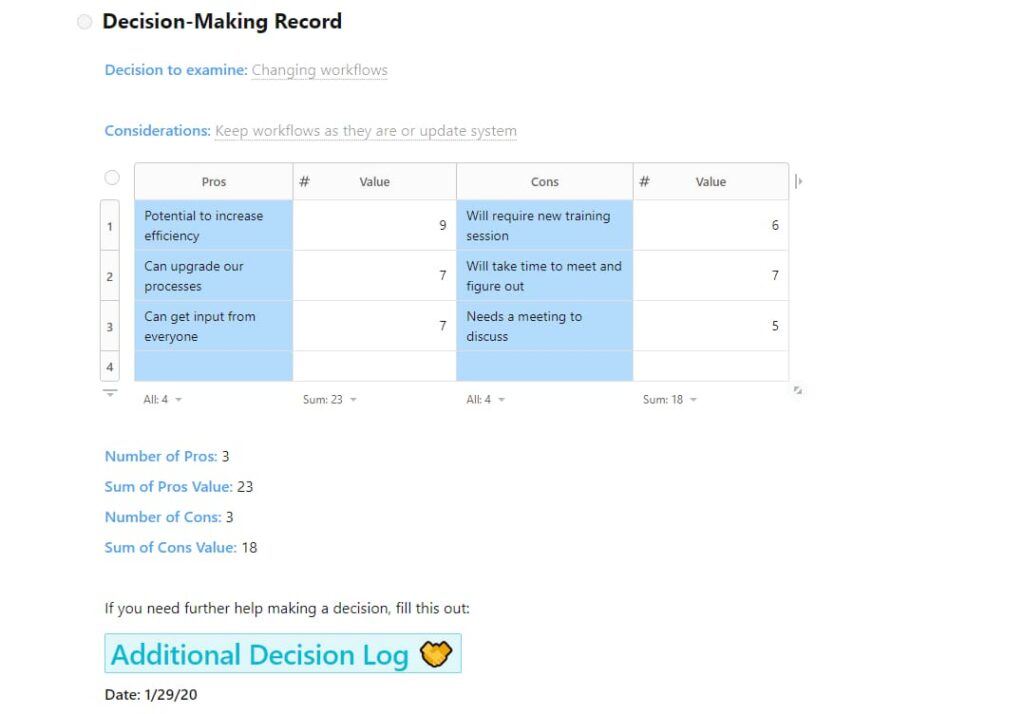
When making decisions, managers often make poor choices because they lack a decision-making model. They just go with their gut feeling and hope for the best.
If you’re a manager or leader, how do you make decisions? Do you just wing it? Or do you use a decision-making model?
To make better decisions, managers must learn how to use decision-making models. Using a decision-making model will help you make better decisions faster and with less stress, while avoiding common mistakes.
Learn five effective decision-making models for managers and leaders. These models will help you make better decisions and increase your chances of success. Once you learn them, you’ll never go back to “winging it” again.
What’s a Decision-Making Model?
A decision-making model is a framework for making better decisions. It helps us understand our options, prioritize what we want to achieve, and choose the best solution and course of action.
Decision-making models can be used by individuals, teams, organizations, and even by governments. They are useful in any situation where people need to make a decision.
Decision-making models help us understand our options, prioritize what we want to achieve, and choose the best course of action. Cognitive models focus on how we think about things; behavioral models look at how we act; and social models consider how others might affect our actions.
Decision-making models can be applied across many situations and contexts. For example, they can be used to make decisions in business, politics, education, healthcare, and more.
The Importance of Models for Decision Makers
Models are useful for making decisions. Whether you’re trying to decide whether to buy a house, hire someone, or choose a college, models provide a framework for decision-making.
They provide a framework for making informed decisions, and they allow managers and leaders to evaluate different options without any bias and choose the best action.
Here are some reasons why it’s helpful to use decision-making models.

1. Make fewer bad decisions
Confirmation bias happens when you only consider data that confirms your beliefs. This means if you already believe something, you’ll look for evidence that supports your belief rather than looking for evidence that contradicts your belief. Decision models can help prevent that.
2. Improve your odds of success
Using a decision-making model increases your odds of success. You can reduce the risk of failure if you define a goal and know which factors to take into account and the steps you should take before making a decision.
3. Reduce stress
By using a decision-making model, you can make better decisions quickly and without too much stress. You can assess an obstacle objectively and not spend hours agonizing over every detail.
4. Increase your confidence
You can feel confident about your decisions when you’ve made them based on a well-thought-out plan. If you’re not sure what to do next, a decision-making model provides a structure for thinking through your options and supports existing views.
5. Avoid common mistakes
When you use a decision-model, you can avoid common mistakes like:
- Not considering all the relevant factors or finding a usable solution.
- Making assumptions and letting an obstacle define your action rather than considering2. Evaluate options facts.
- Choosing the wrong options.
6. Learn from your experiences
You can learn from prior experience and from your mistakes. By reviewing your decisions, you can see what worked and what didn’t. Over time, you can create a usable solution to finalize your action.
7. Build relationships
A good decision-making model helps you build relationships. It shows respect for others and encourages open communication, so you can achieve goals and overcome obstacles.
8. Get feedback
It’s important to hear other people’s opinions. If you don’t listen to others’ advice, you may end up doing something that doesn’t meet their expectations. A decision-making model lets you gather feedback, so you can create potential solutions.
9. Be flexible
A decision-making model is flexible enough to adapt to changing circumstances. You can change your mind as new information comes in. You can also adjust your plans as needed.
10. Keep track of your decisions
Once you’ve made a decision, you’ll want to keep track of it. A decision-making tool makes this easy. You can create a list of your thoughts and ideas and then review them later.
Having a decision model you can rely on to make better decisions will help you become more successful.
What is Rational Decision-Making Process?
Rational decision-making is a method of problem solving that involves gathering facts, evaluating options, weighing pros and cons, and then choosing the option that offers the greatest benefit, while minimizing risk.

It’s important to understand that rational decision-making is different from emotional decision-making. Emotional decisions are based on feelings rather than logic, whereas rational decisions are based on reason. While emotions play a role in our lives, they shouldn’t always influence our actions.
When you use a rational decision-making process, your goal is to choose an action that maximizes benefits and minimizes risks.
You can reduce the risks associated with making bad decisions by following these steps:
1. Gather facts
Before you start analyzing an issue, you need to collect as many facts as possible. This includes things like:
- The current state of affairs (what is happening now).
- Your desired outcome (how you’d like things to be).
- The consequences of each action (the results of taking certain actions).
2. Evaluate options
After collecting facts, you need to evaluate the available options. To do this, ask yourself questions such as:
- How will a solution determine the best result?
- Which option has the least negative impact?
- How likely is it that I’ll achieve my goal?
Your aim is to determine how likely each option is to succeed and which option is most likely to get you closer to your objective.
3. Choose the best option
Now that you have evaluated your options, you should choose the one that seems to offer the greatest potential for success. The key here is to define the pros and cons of each option, then choose what you believe is the best option.
Techniques that support rational decision-making include:
- Create a decision matrix. A decision matrix is a visual representation of the pros and cons associated with each option. Using a decision matrix forces you to consider all of the possible consequences of each choice.
- Develop a decision tree. A decision tree is a diagram that shows the different paths that could potentially lead to a particular outcome. A decision tree helps you evaluate the potential costs and benefits of each alternative.
- Use scenario planning. Scenario planning is a method of thinking through future events and identifying solutions to respond to them.
In summary, rational decision-making is a process that involves gathering facts, evaluating options, and coming to a conclusion based on the available evidence. When the rational decision-making model is properly used, it can lead to effective outcomes.
Types of Decision-Making Models
Here are a few decision-making models that can help you make good decisions and avoid poor ones.
1. Intuitive decision model
The intuitive decision model is based on intuition alone. This is based on trusting your gut or your hunches. Sometimes, people will make a decision based on their gut feeling or intuition. The intuitive model works well when you don’t have a lot of time to think about a problem or situation.
Pros of the intuitive model
- Can be applied quickly. You may not spend much time considering the pros and cons of a decision.
- Easy to use. It doesn’t require any formal training.
Cons of the intuitive model
- There’s no guarantee you’ll make the right decision.
- It’s easy to fall into the trap of relying too heavily on your gut feelings.
2. Recognition-primed decision model
This is most useful when it comes to recognizing patterns to help you make decisions. You can also use the recognition-primed model when you’re trying to solve problems.
For example, if you’re having trouble deciding whether to buy something, you could ask yourself questions about why you bought something in the past. By asking yourself questions about previous purchases, you can determine whether or not you should purchase something today.
When you don’t have enough information to make a decision, the recognition primed model can help you decide what to do next.

Pros of the recognition-primed decision model
- Use it to recognize patterns and trends in your life.
- Can apply this model to many situations.
Cons of the recognition-primed decision model
- Need to know what you want before using this model.
- May not always know what to do next.
3. Creative decision model
The creative decision model is based on creativity and innovative solutions. This is based on being able to come up with new ideas and solutions.
Pros of the creative decision model
- More fun than other types of decision-making.
- Can generate lots of ideas by brainstorming.
Cons of the creative decision model
- Not always reliable.
- Requires more effort than other models.
4. Analytical decision model
The analytical decision model is based on logic and reason. This is based on applying rules and principles to a situation. The way it works is simple: you gather all the relevant data and then analyze it.
Pros of the analytical decision model
- Requires fewer resources than other models.
- Provides a clear framework for decision-making.
- Works well when there’s a lot of data to analyze.
- Helps you make decisions based on facts rather than emotions.
Cons of the analytical decision model
- You need to gather all the necessary data first.
- Analyzing data requires some skill.
- Takes longer than other models.
5. Emotional decision model
The emotional decision model is based on emotion. This is based on taking into account your personal values and beliefs when making a decision.
Pros of the emotional decision model
- Allows you to consider your own values and beliefs.
- Gives you a chance to reflect on your own thoughts and feelings before deciding.
Cons of the emotional decision model
- It can be difficult to separate your emotions from your values.
- Emotions are hard to control and aren’t always accurate.
- May lead to bad decisions because of our personal bias.
You can pick and choose which decision-making model you want to use based on the situation you’re in. If you need to make a quick decision, you can choose the intuitive decision model. However, if you have time to think things through, you may want to try out one of the other four decision-making models.
How FuseBase Helps with Decision-Making
Having a tool you can refer to that contains the decision-making models described will help you come up with a potential solution to your situation easier. You can do that with FuseBase.
FuseBase can help with decision-making in the following ways:
- Create personalized templates with all the models in separate documents or folders.
- Gather all the information you need. Before you start using a decision-making model, you need to gather the information you need to make a good decision. For example, if you’re going to use an analytic decision model, you need to collect all the relevant data.
- Collect information or data in multiple formats, such as text, images, tables, and diagrams.
- Use different tags and colors to represent different categories of data, which means you can refer to any information you need quickly.
- Organize the information you collected in a logical order so you can easily access it later. You can use a folder and sub-folder structure to organize any information.
- Make notes about what you learned during the process of gathering information
- Use the tools available in FuseBase to create templates that include all the information you gathered. Then, you can use the templates to make decisions based on the situation you’re in. When you’re ready to make a decision, you can simply open a template and follow the instructions.
With FuseBase, you can create your own decision-making model that suits your needs. You can also share your decision-making model with others, so they can benefit from it, too.
To find out more about how you can use FuseBase as a decision-making tool and to start a 14-day free trial, visit this website.
In conclusion, decision-making models are useful for managers and leaders who want to make better decisions. To get started, you should first decide which decision-making model works best for you. Once you’ve decided on a model, you’ll be able to make better decisions faster and with less stress.
Your effectiveness will affect how you manage your projects. Find best practices and how you can manage multiple projects in one of our blog articles.
Whenever you make a significant change in your company or introduce something new, you need to go through a change management process. In the latest blog post, learn 10 steps to effective change management, so you can implement what you want to a lot easier.
See how FuseBase can help you with management tasks
If you found this article helpful, please share it so others can benefit too.
Keep up with FuseBase’ latest articles and updates on our LinkedIn page.
Found it useful? Share the article with your community
Subscribe to our blog!
Get weekly tips and insights on how to grow your business